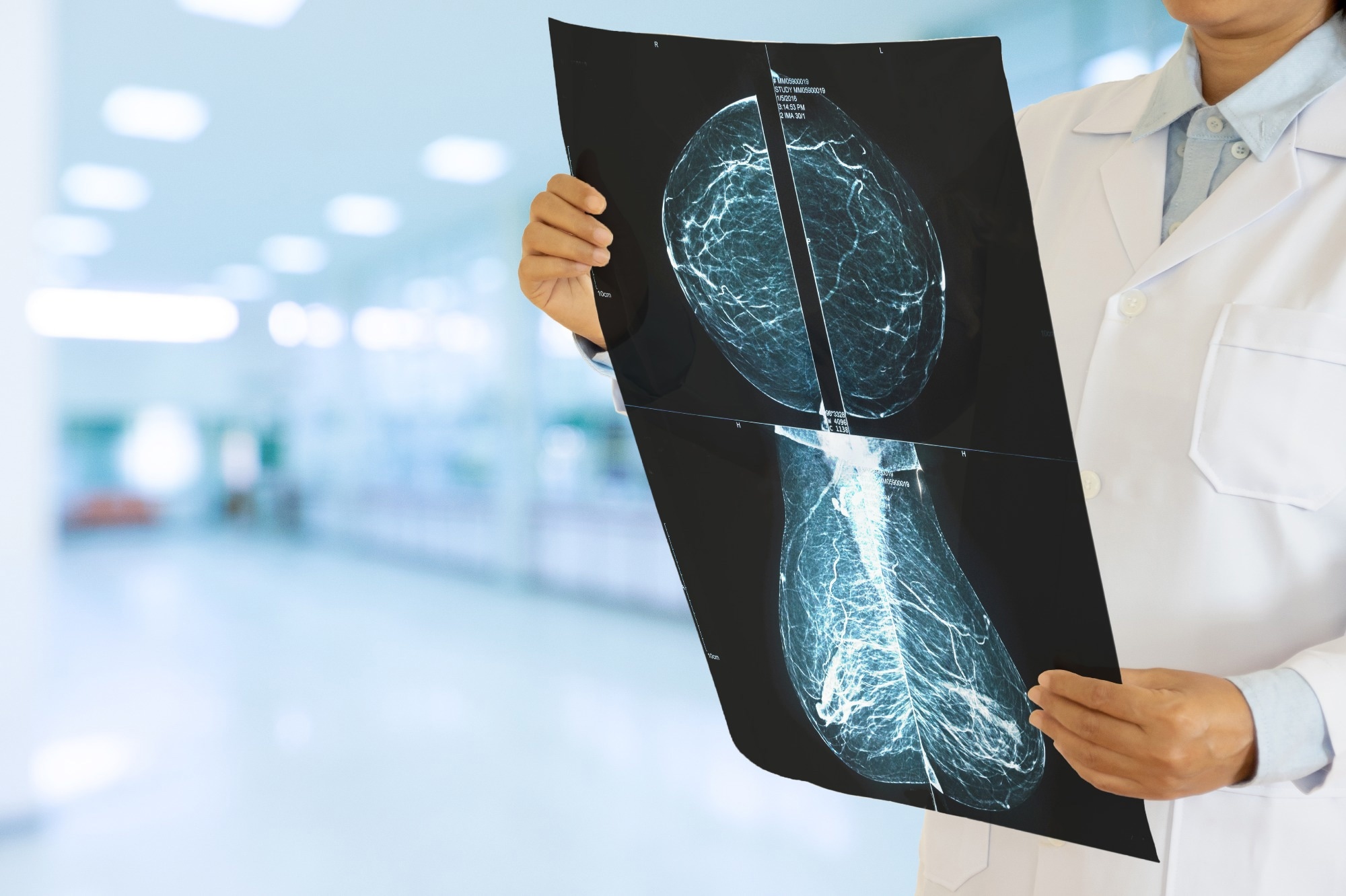The early detection of breast cancer through mammography can lead to a reduction in mortality among women aged 50-69 years. It is for this reason that most breast screening programs using mammography invite women aged 50-69 years; however, there remains a lack of data on the benefits and potential harm of mammography in women 75 years of age and older.
 Study: Health benefits and harms of mammography screening in older women (75+ years)-A systematic review. Image Credit: ChooChin / Shutterstock.com
Study: Health benefits and harms of mammography screening in older women (75+ years)-A systematic review. Image Credit: ChooChin / Shutterstock.com
Background
For women 75 years and above, little evidence is available on the harms and benefits of mammography screening. In 2016-2017, 1.2% of women above 85, 5.4% of women aged 80-84, and 14.4% of women aged 75-79, underwent mammogram screening.
There is no consensus globally on if and when mammography screening should be discouraged for older women. Although mammography could have apparent benefits regarding the identification of risks, the presence of specific comorbidities could make routine screening harmful, and a shorter life expectancy could diminish the benefits of screening among older women.
About the study
The current study systematically reviewed and synthesized existing evidence on mammography outcomes among older women 75 years of age and older to aid screening recommendations. Medline, Embase, and Cinahl were the databases that were searched, in addition to manual searching.
Articles published between 1990 and July 2022 were considered without language restrictions. Taken together, 27 observational and nine modeling studies were included in the analysis.
Studies including women aged 75 years and older were included in the review. However, some studies were excluded if stratification did not allow extraction for the age group of interest. The benefits and harms of mammography were extracted as relevant outcome variables.
Key findings
There was no clear evidence of the health benefits of continuing mammography screening among women aged 75. An equal number of studies showed a beneficial effect on mortality and no effect on mortality. Some studies used un-informative comparisons, making inference difficult.
Some of the harms considered in this study were recalls, biopsies, false positives, and overdiagnosis. The evidence presented on these was more consistent, although a smaller number of articles highlighted the harms of screening among older women. The results for overdiagnosis were more consistent, which could be explained by the presence of competing causes of mortality and a shorter follow-up time.
Limitations of the study
An important limitation of this study is that several articles included uninformative comparisons, which could introduce bias in the conclusions. More specifically, only two observational studies had a meaningful comparison, and some modeling studies conducted simulations. Considering only these studies, they all indicated harms, and only half reported health benefits of screening.
Some of the other comparisons did not provide conclusive evidence of the harms and benefits of screening among older women. Some studies comparing younger and older women based on certain parameters like the screening interval are amenable to lead time bias and may favor screening. The results of many of these studies with uninformative comparisons need to be considered with caution.
Several studies provided metrics offering information about the performance of the screening process; however, these studies provided little evidence of the health benefits related to continued screening. This is particularly problematic, as the detection metrics are not the same across all age groups.
Many of the reviewed studies were prone to bias, which led the authors to conduct a quality appraisal using tools for observational studies; however, these tools are unavailable for modeling studies. Therefore, these results should be interpreted with extra caution.
This highlights the challenges in the quality assessment of modeling studies due to the rich heterogeneity in the assumptions. This issue is exacerbated when the papers do not clearly state their assumptions while describing their methodology.
Conclusions
Limited evidence is available to provide a definitive recommendation on continuing/discontinuing mammography beyond 75 years. Future research should include more informative comparisons and estimate the extent of overdiagnosis.
Journal reference:
- Mathieu, E., Noguchi, N., Li, T., et al. (2023) Health benefits and harms of mammography screening in older women (75+ years)-A systematic review. British Journal of Cancer; 1-22. doi:10.1038/s41416-023-02504-7